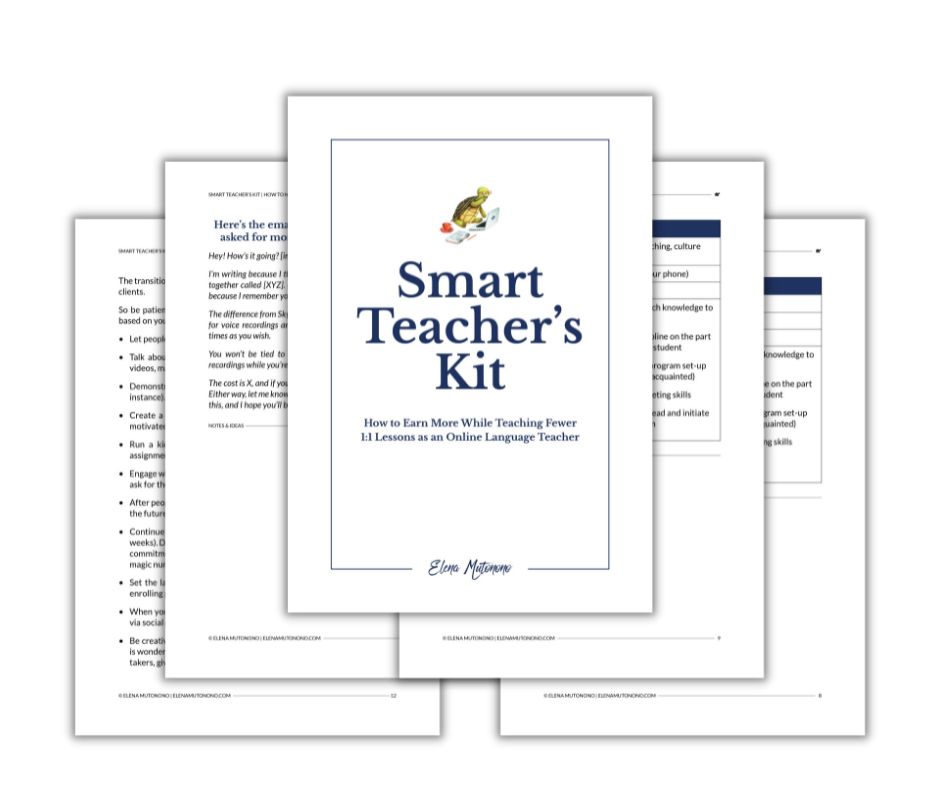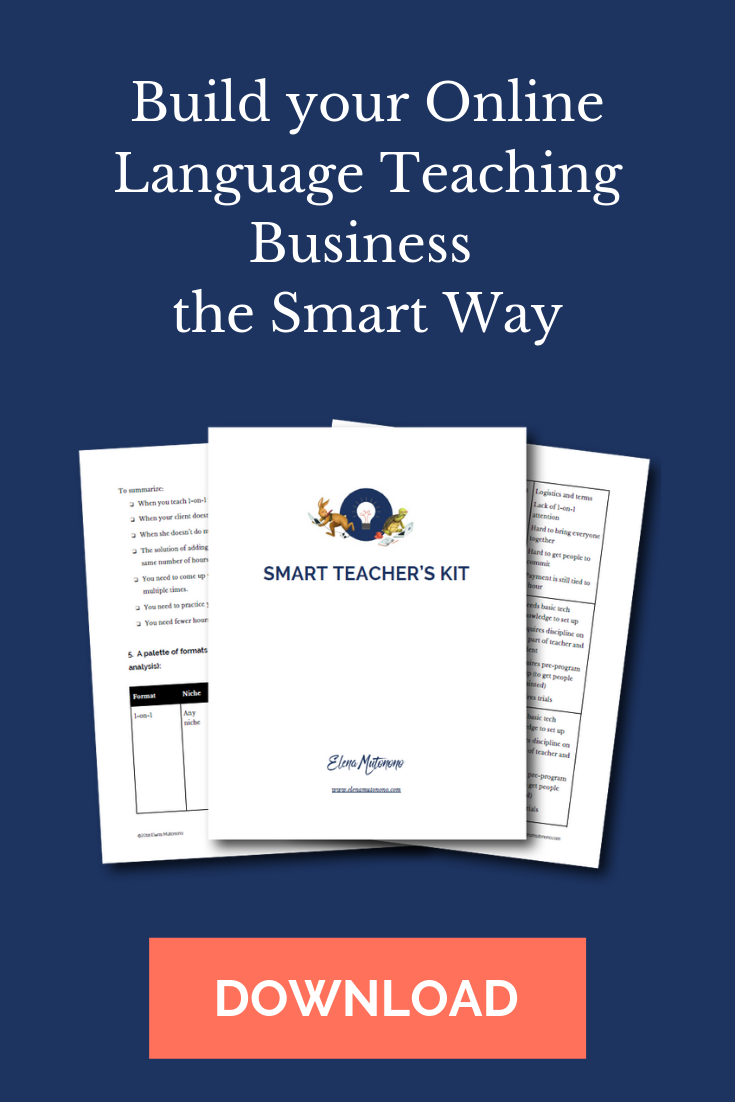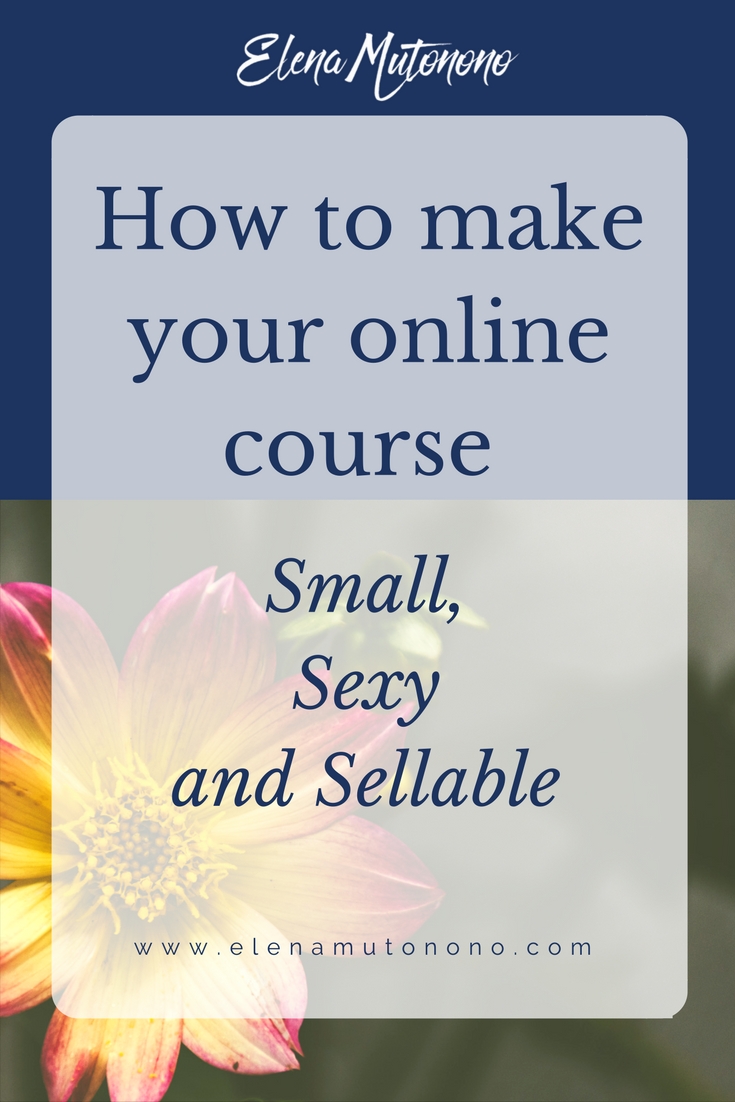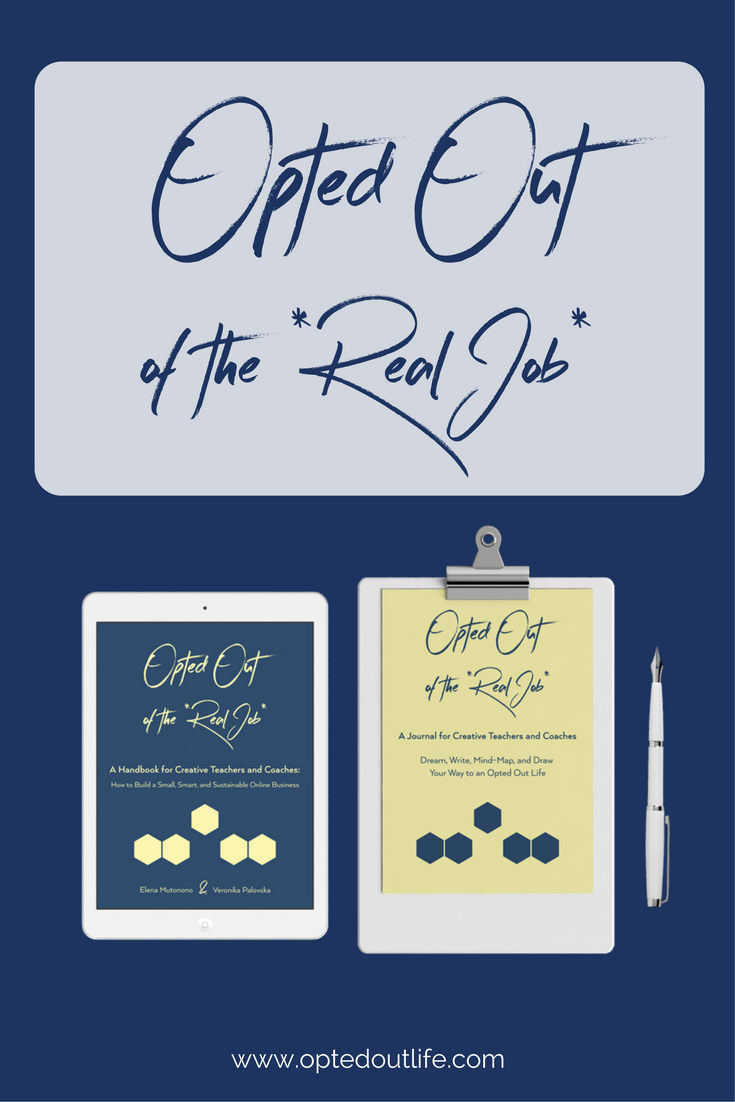Want to look behind the scenes of my $19k launch? This post is my detailed report of all the work and planning that went into putting together my Smart Teacher’s Library launch in September of 2022. The Library is currently open for enrollment, and the numbers of the Spring enrollment have surpassed the one in September. If you join our community, you’ll get a detailed report of how the two launches were different, how I showed up, what tweaks I made and what I learned from things that worked and didn’t work.
To make it easy, I’ve divided this post into 7 sections, and you can read the whole thing, select sections and come back any time to refresh your memory. I’m thankful for your comments and shares – this is an incredible resource, especially for those of you who, like me, tend to take things for granted after several successes and believe that launches “should” run themselves.
In this post you’ll learn how to
- Create your audience database.
- Start preparing your audience early.
- Divide your audience into groups.
- Sell to the most loyal clients.
- Sell to current or past clients.
- Sell to everyone else.
- Price your offer.
#1: Create your audience database
You may or may not have an email list, but not all people on your list are the same. The sooner you begin putting together the names + emails of all your clients and customers, the more successful and easeful your launches will become.
Your database of current, past and potential clients (customers + workshop participants, free club members, etc.) represents all the assets of your business. Quite literally, this is a place where you go first to make offers and sales.
- not on social media that you don’t post.
- not on youtube that will take time before it shows up in searches.
- not on a podcast platform where people still don’t know you.
You go where people already know, like and trust you. Many of them have already paid you and paid you a lot.
The question is though — do you have that list? Usually teachers tell me, “Yes, I have all those emails in my inbox.” But that doesn’t count. The goal is to keep them in one spot. All in one spreadsheet. Maybe in an airtable where you can color-code and create a system that includes multiple pieces of information.
This list is never a “done deal.” It’s always in the state of growth. For me, I have a large database for my Smart Teacher’s Library members as well as clients. I am currently working on adding a new one to include my workshop participants, people who engage with my emails and my product customers (something I am now learning to appreciate thanks to my new online course shop).
Once you have a database, you can create a custom marketing plan that will bring you higher revenue than sending an announcement to your whole list or posting a post on Instagram.
So begin assembling your database now. Start with current and past students.
Here’s how:
- If you have your scheduling software, export your clients in the past 3 months, add them to a spreadsheet.
- If you don’t have the software, look at your Google calendar and add all your students with their email addresses to a database.
- If you use contact forms for potential clients, take a look at all the people who tried to reach you and put their information in your database.
After you put together your contact list (20? 50? 100? what’s doable?), try adding more columns to this database that makes it useful, for instance:
- How long you worked with them
- What was the focus of your work (this will help with niching!)
- How they found you (website, social media, referral)
- The notes section with your experiences.
- And any other piece of data that you will find helpful.
This stuff is meticulous work. In the future you will be able to delegate it to someone else. But right now, while you’re still small, start putting this stuff together.
As I tell my kids who don’t want to speak Russian with me, “One day you’ll thank me for signing you up for Russian classes.”
One day you will thank me for encouraging you to put together such a database. When you will no longer need to post the “I need students” post with 1 like. When you no longer need to feel like you should start a Youtube channel just so someone might hire you (next week).
Task #1: Start putting together your database today.
#2: Prepare your audience early.
Another title for this would be — don’t take your past success as a given.
You know this phrase we hear a lot in the coaching world, “Today is another day” or “Today is a new day” or “Today is a blank page” — any number of variations. And I used to always think of them as your after-failure-pick-yourself-up lines.
And they are.
But they can also be used in the after-you-reach-your-goal situation.
Because what happens after you successfully launch a product or service? What happens when a program is sold out a few times?
You begin thinking that it’s always going to be like that — success from now on and forever. And you begin slacking off.
Here’s how it shows up:
“Why should I talk about my product? People already know what it is.”
“I have a brand-new sales page. Why do I need a launch series?”
“I’m tired of social media. I’m just going to post 1 thing and it’s OK.”
“I hate writing sales emails. I’m just going to invite people to join me once.”
“I’m just going to post and see who signs up.”
“Why do I have to…. Again?”
“I don’t wanna….”
Somehow you feel entitled that all these sales would just happen, and I know it because I’ve felt this way. Less launching, fewer emails, no posts on social media (after all, everyone knows about my product, right?). And in the end I get less-than-desired results.
So for this launch, a few things happened that helped me consider all this as a new experience:
- I switched the Library from a recurring payment model to a lifetime payment (a geeky article about this here). I needed to educate teachers about this change.
- I had joined a community of online business owners and coaches and began re-learning some of the “basics”.
- My long-term work partner was gone and I felt like it was a new era in a way, and I was choosing to step into my power.
So to prepare for my launch in September, I came up with a completely new launch plan, and I began working on it 4 months before the Library enrollment opened.
That doesn’t mean that I was posting the same kind of stuff every week for the next 4 months. But I created different marketing strategies depending on the segment of my audience I was connecting with.
There are different strategies to use when you’re selling the same product to your current or past clients and to the rest of your audience. More on that later, but for now, here’s what I did 4 months prior to enrollment:
- Wrote an email to current Library members to let them know about the changes. (May)
- Wrote an email to past Library members to let them know about the changes. (May+June)
- Launched “Summer in the Library” to enroll new people and encourage them to sign up in September (June).
- Created a 5-email launch sequence about the Library (sent to the entire list). More on that in my new course Write Emails that Make Money (July).
- Created a masterclass on paid communities (August) where I continued talking about the Library.
- Launched the Library (did a series on Instagram + via email).
Each one of these was done in a different way so it wasn’t all monotonous and similar to each other. Some people will look at it and see a lot of work (which is what I used to see as well). But now I reframed the way I think about launching and I take it as a creative challenge, and it helped me overcome my urge to give it all up or call it “salesy.”
Task 2: Start early, make a plan and stick to it.
#3: Divide your audience into groups.
If you’ve tried launching a product or service several times, you know that the first launch is actually the easiest. You will deal with your own resistance and perfectionism.
You will still be trying to find your voice so you don’t sound robotic or salesy but if you launch to the right people you will find your first launch the easiest, compared to the ones that follow. (I talk more about that in my course on launches in case you’re curious).
But when you launch the same program/product the second or third time, you will discover that it gets harder to bring new people in. This is when we tend to create stories like “my audience doesn’t care,” or “my audience is tired” or “they are on vacation,” etc.
The truth is, your consecutive launches are harder because you’re now reaching a different segment of your audience, and they need to hear your offer differently. This is known in marketing as the innovation adoption curve (a slightly nerdy article here).
I know, it may sound like a drag for those of us who want a streamlined blueprint that fits all, but in marketing, as in most of our language classes, we need to “tailor” our message to the needs of the audience. And in fact, understanding this distinction will make marketing more straightforward.
Based on the innovation adoption curve, you can divide your audience into 5 categories:
- Innovators (they can easily take risks and need little information).
- Early adopters (they are risk takers but need a bit more information).
- Early Majority (they will wait until the first 2 groups have tried out your product and need more proof).
- Late Majority (this group will need a lot more time and they generally ask more questions).
- Laggards (that’s your grandmother who is still using an old dial-up connection for the Internet — is there such a thing still?)
To over-simplify things, you will most likely be marketing to the first 3 groups, some of them are your biggest fans, others used to work with you but need some nudging to come back and then everyone else (people on your list or your followers).
Depending on the group, your messaging changes. The length of your pitch changes. The argumentation changes. So before we get deeper into each category inside your audience, think about your own audience and divide it into these 3 groups: fans (best clients), cautious fans (current and past clients) and your followers/email subscribers.
Task 3: Divide your audience into groups. Color-code the group in your airtable.
#4: Sell to your most loyal clients.
Your most loyal clients are your greatest fans. If you can’t sell anything different to them it’s going to be hard to sell to someone who doesn’t know you on social media.
So if you have an idea for a different format, a new product or a program/course, announce it first to your most loyal clients and not to the folks on social media. They have already invested in their work with you, and if you’re able to sell to them, you will get a quick return and validate your idea.
Here’re a few components to keep in mind when you’re selling to your most loyal clients:
#1: Make a clear offer.
Write to your current clients and offer them something new. Explain how this offer is so much better than what they currently have. Show to them that they’re going to get a lot more value from the new offer.
I used to think that going to my current clients was a bit awkward. I mean, they’re already paying me money, isn’t it awkward and greedy to ask them for more? So I left the money on the table to save myself from the “awkward,” but I didn’t just leave the money. I didn’t bring anything new and exciting to my clients and left them to do the good-ole stuff they were familiar with.
Today, I go to my clients often because I believe that if I can offer them something even more amazing than before, it’s awkward NOT to share. It’s actually greedy to keep it all to myself.
#2: Follow up.
People may forget or they may read your first offer and it’s not really clear. Some of my clients are so amazing, they will write to me and say something like, “can you explain this to me again?” Which is fantastic!
It teaches you to read, reread and rewrite. Either way, following up allows you to make sure people understood what you were trying to sell and not lost your email in their inbox . Again, one of the reasons I didn’t follow up on people is because of this same word “awkward.” That thought created an emotion of embarrassment, which led to no action (and no results!).
#3: Create the best incentive for your clients.
That’s the key. When you offer something to clients, let them know they’re getting a red-carpet treatment for what they’re paying. It’s so amazing, too! When you give more to the people who have worked with you longer, they’re more likely to recommend you to their friends.
It never ceases to amaze me how easy it is for us to get so distracted by the shiny objects of social media and hope to get more clients from there. All along, there’re clients that are right within our reach, and we can do something for them right now. And get paid, too. It is absolutely mind-blowing.
My first new library members were my most loyal clients who were committed to continue their journey with me. I recognize that not all loyal clients may take you up on the offer, and it’s OK. Things change. But — the fact that 2/3 of my best clients signed up gave me wings!
Your clients are waiting for this new offer, so step into your power and create an amazing experience for them.
Task 4: Take your new product idea to your best clients first. Try it today. Create an upgrade for them. Add more value. Charge more.
#5: Sell to current and past clients (who are more cautious).
I thought that selling to my greatest fans and more cautious clients was similar, but it turned out to be a bit more complex. In my case, I discovered that the previous Library members felt like they already “graduated” from the Library, that they “learned everything there was to learn” and needed to move on to something else.
While moving on to something else is definitely valid, I found from talking with my former Library members that they had a different understanding of the Library than what it had become. The reason for that is that the Library had changed. It was changing as the members were making suggestions and as I was evolving as a coach.
I could translate it to my own experience. If I take a program, I form my own opinion and I don’t really take the time to think that the program may have changed or that my opinion may also be subject to change (hello, fixed mindset!).
So to encourage the former members to come back, I had a task list:
- Figure out what the former clients are thinking about the Library.
- Change the copy of my pitch email to address all those points.
- Take a look at my content to incorporate themes relevant to old members.
- Create an incentive that would help them make the decision.
- Learn from people’s no’s and address the objections for future reference.
Among my former members are people who have since found a job or chosen a different niche for their business (that no longer deals with language teaching/learning). When I realized that the Library would no longer be relevant to them, I focused my effort on the rest of the group and tweaked my product description to include:
- Screenshots to show how the Library looks on the inside.
- Fuller description of the new features (especially the new ones).
- Details on the community (more opportunities to engage).
- Clear financial incentive: pay once and stay forever, nothing recurring.
- Promotional collaboration: an incentive for teachers who have already built their business structures — they can get more visibility through collaborative effort.
When you pitch to your more cautious clients and encourage them to take a course with you, make sure you show to them how the content has improved and how your role has changed as well.
They may have lovely memories of your work, but they may think it’s no longer “relevant.” So if your content has changed, be sure to highlight it in such a way that people see it.
Task 5: Look at your offer or your copy to see how it can spark an interest for people that don’t think your course has changed.
#6: Sell to everyone else.
When I talk about selling to “everyone else,” I mean the subscribers on your list or your social media followers — mostly people who have never bought from you. The challenge here is to build trust quickly.
Since people buy from those whom they know, like and trust, showing up on social media with the pretty Canva post that “your course is now open” is not going to cut it. If you’ve done it before, you know people don’t react to it much, and social media hides those posts for lack of engagement.
So how do you increase your chances of selling to people who never bought from you?
How do you help them know, like and trust you in a really short period of time?
Here’re several ideas (I’m omitting advertising):
#1: Be more consistent on one of your marketing channels.
You want to put in a bit more effort to increase your visibility and share about your program/course in a variety of creative ways.
When people see you often, they develop a certain level of familiarity with you even if they don’t read your posts. Familiarity pulls down their guards and decreases their levels of fear that usually keeps them from buying in the first place.
#2: Reach a new audience.
There might be people on your list who have been reading your emails for years. They’ve seen your every product and decided that they don’t want to buy. If your audience isn’t growing fast enough, you may be sowing your seeds on the same field and not getting so many results. So why not find another field?
Get on a podcast, be featured in a newsletter, bring in some new people on your list or on your social media through collaborative effort. Start a couple of months before your launch, that will give you some time to show to your new audience that you know something about their journey and can help them along the way.
#3: Connect using video.
This can be a workshop, but if the idea of a workshop is too intimidating just pre-record a video OR conduct a few 1:1 sessions and offer your course/program individually.
Video is a powerful shortcut to gaining people’s trust. You may write several newsletters, but showing your face in a video is often more compelling than your written word. Once a subscriber wrote to me and said (after watching my webinar for the first time) that I sounded much “friendlier” on a video than in an email. Hmmmm….
But I get it. Videos are a proxy of a brick-and-mortar store. When someone hears you and interacts with you, sees your facial expression, you gain their trust much faster.
If you’ve learned anything from this post, let it be this: you can’t wing a launch. The better results you want, the more you’re going to invest. And if you’re getting pretty good results when you’re winging it, imagine what it can be if you took your time and set the intention to do things more thoroughly? How can you show up better for your potential clients and customers in the future?
Task 6: Write down a list of people you can collaborate with to bring new people into your orbit.
#7: Price your offer.
How did I land with the current price for the lifetime membership at the Library?
I’ve had a number of pricing iterations for my community. Initially it was just $19/mo, and all I did was give teachers access to my materials. As the community grew, so did the value and quality of both resources and user experience.
Over the last 5 years, I’ve experimented with different community features: quarterly private coaching sessions, monthly group sessions, video and audio materials, printouts, templates, digital planners, etc. I was watching the stats on my emails to understand what people enjoyed more and I put myself into my members’ shoes and asked what would be the best option for them wherever they are. Of course, ongoing access to the forum is invaluable.
I also took a look at how my work was helping the teachers, what was most effective, which led to me changing my materials from longer videos to shorter and then replacing them with audios (where applicable), along with printables for teachers who spend all their days looking at the screen!
I kept weeding out older materials (online teaching changes so quickly!) replacing them with the newer ones. Currently, there’re very few materials in the Library that are older than 3 years, and those are being updated on a regular basis.
In the past 5 years, I’ve changed my pricing and launching model. I went from monthly to quarterly payments and I offered 2 tiers to keep more people inside the Library. Before switching to my current price, members were paying $100 or $200/quarter depending on the option they went with.
As with any community, people come and go. And for a long time I felt like that was the name of the game, right? You have a paid community and people sign up for a while and then they leave and you hope that they’re doing well on their own. While it was OK for some, I wished others would have stayed longer.
I also discovered that the recurring payments were a drag (at least for that time) and I felt like changing that would better communicate the value of my offer and emphasize the important idea of staying and growing inside a community.
So to determine my new price, I took a calculator and looked at the stats and asked myself:
How long (on average) does it take for a teacher to get results? And here of course I’m not talking about people who don’t do the work, but the people who actually show up. Depending on the kinds of results, a teacher would need 1-2 years.
If I provide all of my resources and coaching support, how much would it cost for each participant?
I included the materials, the forum and the group coaching sessions and multiplied by the number of quarters at the current rate. That took me to the amount of $1,600. I decided to go with $1,500 for the first year (September 2022 and February 2023).
Knowing how much I love creating new courses, I would make them available to all the members for free and they can give me feedback needed to improve.
Once I’ve made improvements and added more value, the price of the Library will go up, which is coming in September of 2023.
There’s never a universal pricing chart for what to charge for a program or a course. But what I discovered is your first number is your starting point. And as such, it is good enough. You have permission to make changes, tweak, adjust, add, take away and make the experience better. You have permission to scrape it all and start anew. You can double the price within a year if you want to.
Over time, as you grow and learn as a teacher/coach, your customers will benefit, too. The lifetime option is the most logical for me at the moment — but will it change? Perhaps. I don’t know right now, and that’s what makes this whole process more adventurous.
Want to learn more about increasing your prices? Check out this course or join the Library to access it for free.
The main takeaway from this is — consider your pricing process a rough draft, which (if you struggle with perfectionism) is probably a nightmare. Still, the sooner you let go of trying to be “on point” every single time you create anything, the more impact you’ll have.
You will no longer be overwhelmed or anxious about delivering your work into the world. You will know you’re enough.
It’s funny, I used to think that believing that I am enough would make me strive less. I would want less, dream less and achieve less. And actually, the opposite is true. The moment I embraced myself as “enough” right where I am, I detached my worth from the results I was or wasn’t getting.
I freed myself to create more, experiment more and I stopped burning out because I learned that my results were no longer about me, my professionalism or what others would think about me.
I’m still on this journey, but I can tell you, enough is a beautiful place to be.
Task 7: Define your “enough number” for your product or program. This number is your starting point. It will change, but for now it is OK.
Thanks for reading today! Join the Smart Teacher’s Library and come walk this entrepreneurial journey with me. I’d love to help you discover how both your business and mindset can become sustainable! ~ Elena



 Welcome to my nook where *Big Magic* happens. My name is Elena Mutonono, I help small business owners package their services as digital products and sell them online. I want you to work smarter, not harder. Increase your impact beyond your current face-to-face clients. Grow your business as you reach more people all over the world.
Welcome to my nook where *Big Magic* happens. My name is Elena Mutonono, I help small business owners package their services as digital products and sell them online. I want you to work smarter, not harder. Increase your impact beyond your current face-to-face clients. Grow your business as you reach more people all over the world.







